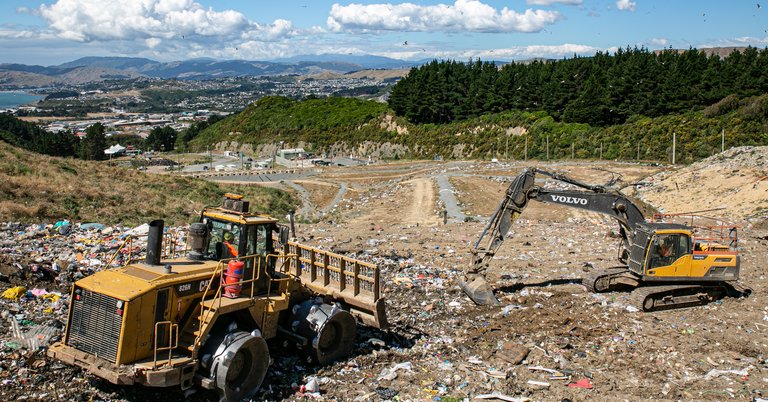

On this page you will find
Spicer Landfill is a joint venture, owned by Porirua City Council (78.5 %) and Wellington City Council (21.5 %). The landfill is managed by Porirua City Council.
Porirua City Council reports to a Joint Venture Committee which has representatives from both Porirua and Wellington city councils.
EnviroWaste Services Ltd operates the landfill on behalf of the two councils.
The landfill operates under resource consents issued by Greater Wellington Regional Council and must be managed according to the conditions of those consents, to ensure any effects on the environment are minimised.
Currently around 75,000 tonnes of waste go into the landfill every year. We use data collected from the landfill weighbridge to estimate how quickly the landfill is filling up and how many years we have until the landfill will be full.
Every three to four years we run a Solid Waste Analysis Protocol (SWAP), which looks at what residents in Porirua City are throwing away. Sample contents of rubbish bags and wheelie bins from our kerbside collections are sorted into 25 different categories, such as organic, recyclable, and non-recyclable paper, food waste, plastics, clothing, textiles, and glass.
The results provide us with a more robust understanding of what’s being thrown away and how much. This helps us to make important decisions about waste reduction in our city.
Our latest SWAP was conducted in two stages October 2022 and March 2023. The results will be available here soon.
As a Council we’re committed to transitioning to a low carbon, circular economy alongside the rest of the Wellington region. Our plan is to reduce emissions produced at Spicer Landfill.
For more information about what our waste minimisation team is doing click here.

The current waste cycle in Porirua
Despite our best intentions to minimise waste, the volume of waste going to the landfill is increasing at a rate greater than anticipated.
You might be surprised at what goes into the landfill and how much of that could be reused, recycled or composted.
Click here to enlarge image.
The landfill currently operates under the following four resource consents issued by Greater Wellington Regional Council (GWRC). The resource consents set out the environmental conditions which the landfill operations must meet.
The resource consents expire at the end of June 2030.
To make sure the landfill is being operated in a way that meets the conditions of the resource consents and ensure that any effects in the environment are minimal, we need to do extensive monitoring and compliance checking. We have experts undertaking regular monitoring and testing of things like water and air quality.
Greater Wellington Regional Council environmental monitoring officers also visit the landfill regularly to do compliance checks. They report on our environmental performance at the landfill annually. You can read those reports here:
For more information about the odour issues that have occurred at Spicer Landfill and what's being done about them visit our Spicer Landfill Odour page.
The landfill Community Liaison Group (CLG) is consulted on the annual review of the landfill’s Operational Management Plan and provides a forum to keep the community informed of what is happening at the landfill and discuss any concerns.
Generally this group meets annually but sometimes additional meetings are scheduled during periods when odour complaints have increased significantly.
If you would like to receive information directly about the CLG meetings email us at [email protected] asking to be added to the mailing list.
To ensure compliance with resource consents the landfill operates in accordance with the Operational Management Plan (OMP). This plan describes how the landfill is operated, managed and monitored. It includes detail on many aspects of landfill management including waste acceptance, filling procedures and environmental monitoring regimes among others.
There is a separate plan required under our resource consent conditions that sets out how landfill gas is managed.